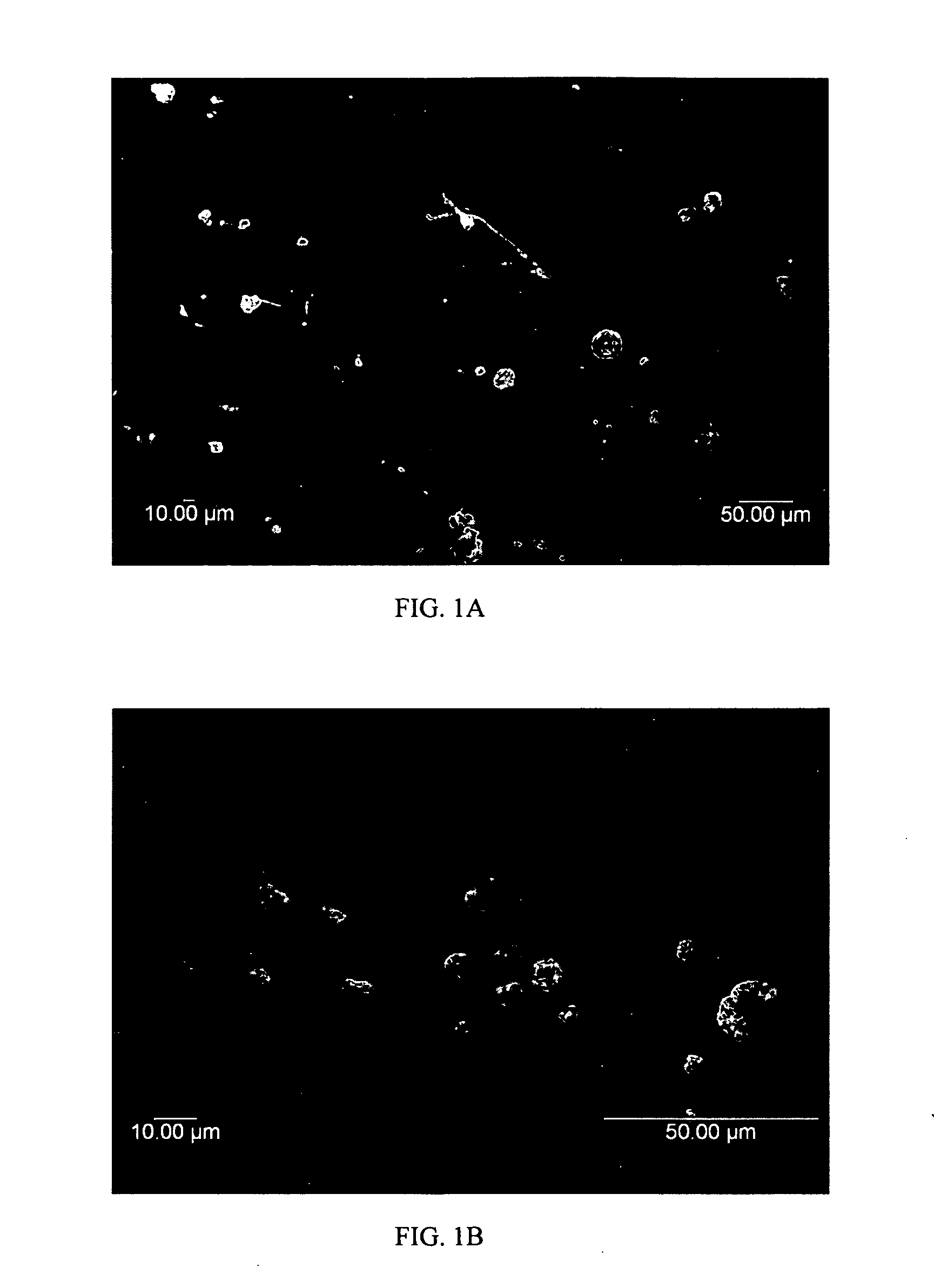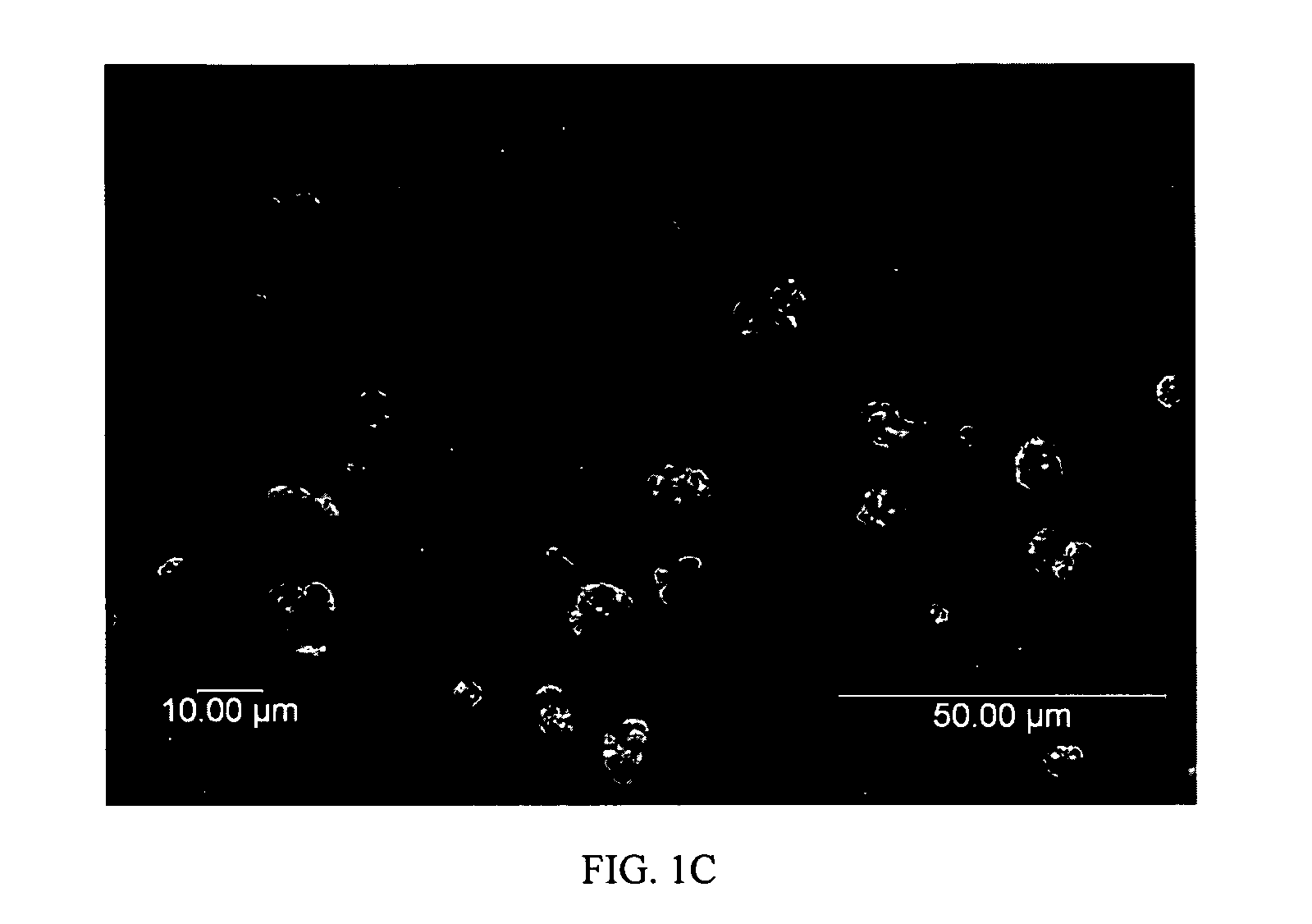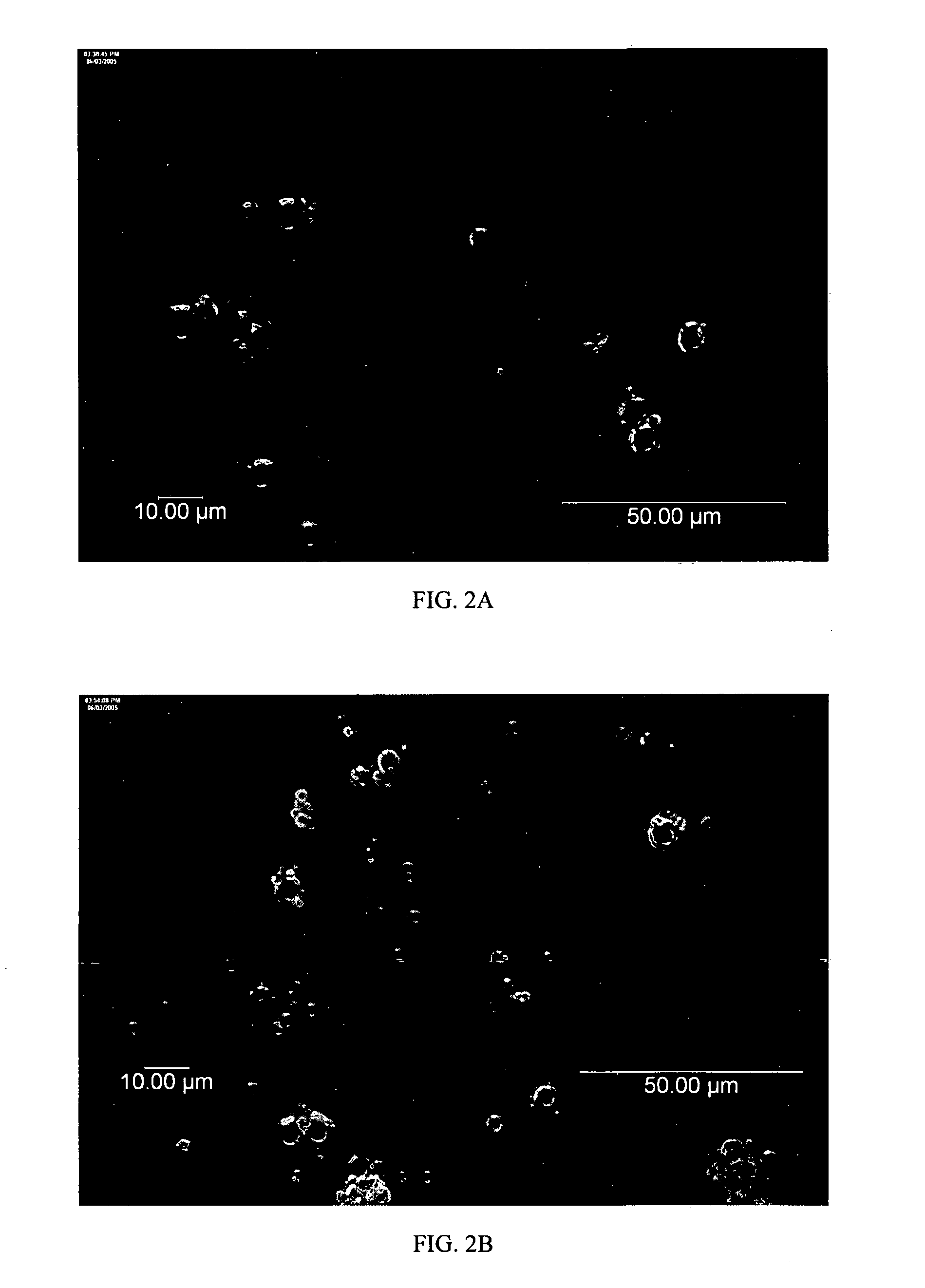Method to improve characteristics of spray dried powders and granulated materials, and the products thereby produced
a technology of granulated materials and spray dried powders, which is applied in the direction of colloidal chemistry, drug compositions, cardiovascular disorders, etc., can solve the problems of high bulk and tap density of powders produced by conventional methods, and achieve the effects of increasing powder density, reducing residual solvent content, and increasing bulk powder density
- Summary
- Abstract
- Description
- Claims
- Application Information
AI Technical Summary
Benefits of technology
Problems solved by technology
Method used
Image
Examples
example # 1
A. Example #1
[0056] 1. Polyvinylpyrrolidone (PVP) (Plasdone® K-29 / 32, International Specialty Products) (10% by weight) solutions were spray dried from a single solvent solution and two solvent / non-solvent blend solutions with different solvent / non-solvent ratios. Solvent was dichloromethane, non-solvent was acetone. [0057] 2. Spray drying was conducted on an SD-Micro® (Niro, Inc.) spray dryer, and experimental conditions were maintained constant other than solvent composition of the solution to be spray dried.
[0058] 3. Residual solvent content:
RESIDUALAPPROACHSOLVENTSOLVENTconventional100% solvent8.0%experimental, #160% solvent + 40% non-solvent7.3%experimental, #220% solvent + 80% non-solvent5.4%[0059] 4. Particle morphology [0060] a. From solvent: spheres and thread-like tails due to viscous effects as shown in FIG. 1A. [0061] b. From solvent / non-solvent: smaller, non-spherical particles with increasing shape irregularity as non-solvent content increases (FIGS. 1B and 1C), los...
example # 2
B. Example #2
[0062] 1. Polyvinylpyrrolidone (PVP) (Plasdone® K-29 / 32, International Specialty Products) (10% by weight) was spray dried from a solvent blend of 60% solvent / 40% non-solvent with and without added methacrylic acid copolymer (Eudragit® E100, Rohm Pharma GmbH) as second added polymer. Solvent was dichloromethane, non-solvent was acetone. [0063] 2. Spray drying was conducted on an SD-Micro® (Niro, Inc.) spray dryer under identical experimental conditions other than the addition of the second polymer. [0064] 3. Results:
[0065] a. Residual solvent content:
RATIOPVP:METHACRYLIC ACIDRESIDUALCOPOLYMERSOLVENT1:21.0%1:02.4%
example # 3
C. Example #3
[0066] 1. 1 part Carbamazepine (CBZ) was spray dried with 1 part polyvinylpyrrolidone (PVP) (Plasdone® K-29 / 32, International Specialty Products) and 1 part polyvinylpyrrolidone-co-vinyl acetate (PVP-VA) (Plasdone® S-630, International Specialty Products) from solvent and solvent / non-solvent solutions at 10% solids by weight. Solvent was dichloromethane (20%), non-solvent was acetone (80%). [0067] 2. Spray drying was conducted on an SD-Micro® (Niro, Inc.) spray dryer under identical experimental conditions other than solvent composition. [0068] 3. Results: [0069] a. CBZ from solvent solution [0070] 1) Particle morphology: spherical as shown in FIG. 2A. [0071] 2) Particle size (from optical microscopy): 10 μm [0072] 3) Residual solvent immediately after spray drying: 3.2% [0073] 4) Bulk density: 0.041 g / mL [0074] 5) Density after 1250 taps: 0.064 g / mL [0075] 6) Product contained polymorphic forms of crystalline CBZ, as detected by modulated differential scanning calorime...
PUM
| Property | Measurement | Unit |
|---|---|---|
| Fraction | aaaaa | aaaaa |
| Fraction | aaaaa | aaaaa |
| Fraction | aaaaa | aaaaa |
Abstract
Description
Claims
Application Information
 Login to View More
Login to View More - R&D
- Intellectual Property
- Life Sciences
- Materials
- Tech Scout
- Unparalleled Data Quality
- Higher Quality Content
- 60% Fewer Hallucinations
Browse by: Latest US Patents, China's latest patents, Technical Efficacy Thesaurus, Application Domain, Technology Topic, Popular Technical Reports.
© 2025 PatSnap. All rights reserved.Legal|Privacy policy|Modern Slavery Act Transparency Statement|Sitemap|About US| Contact US: help@patsnap.com



